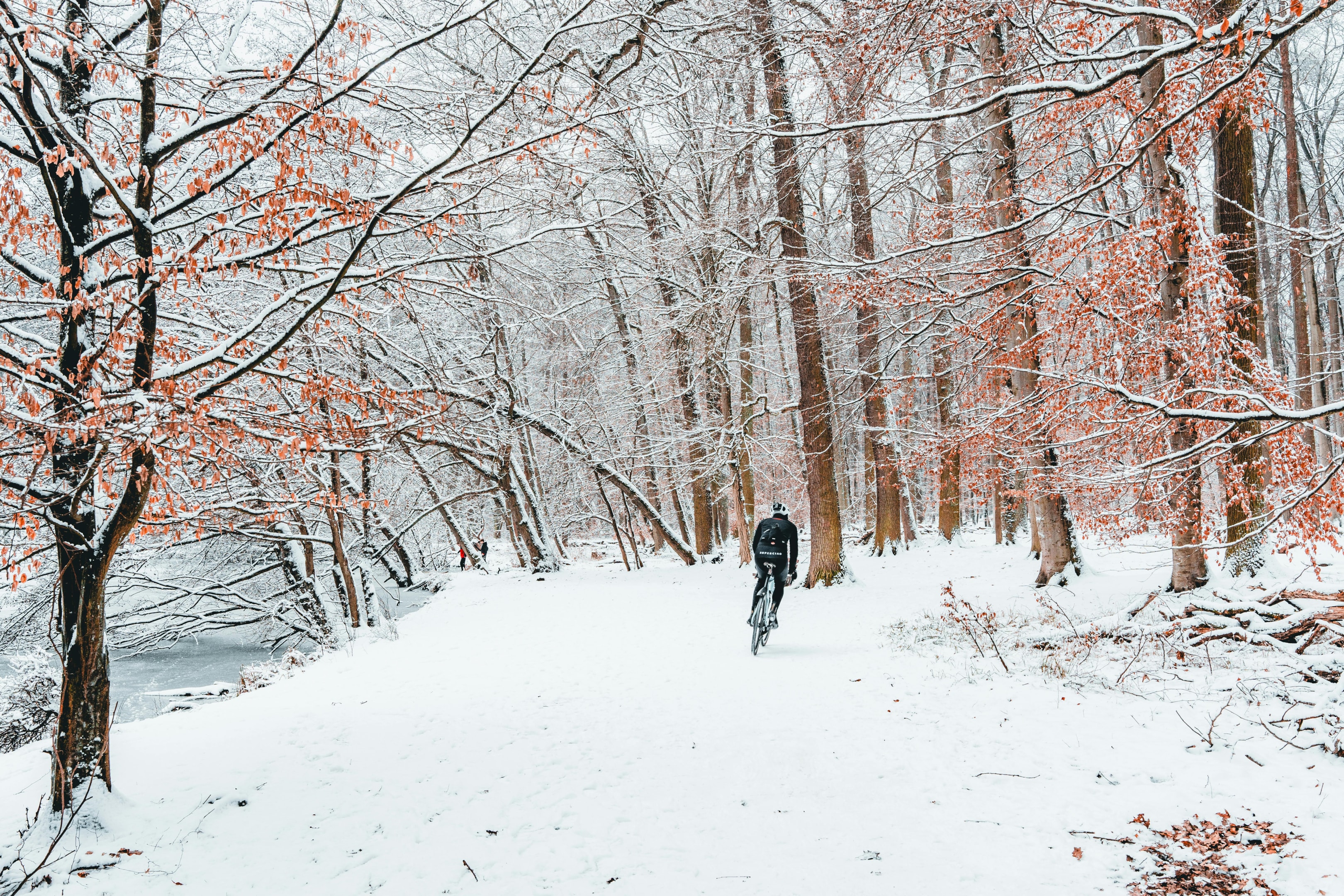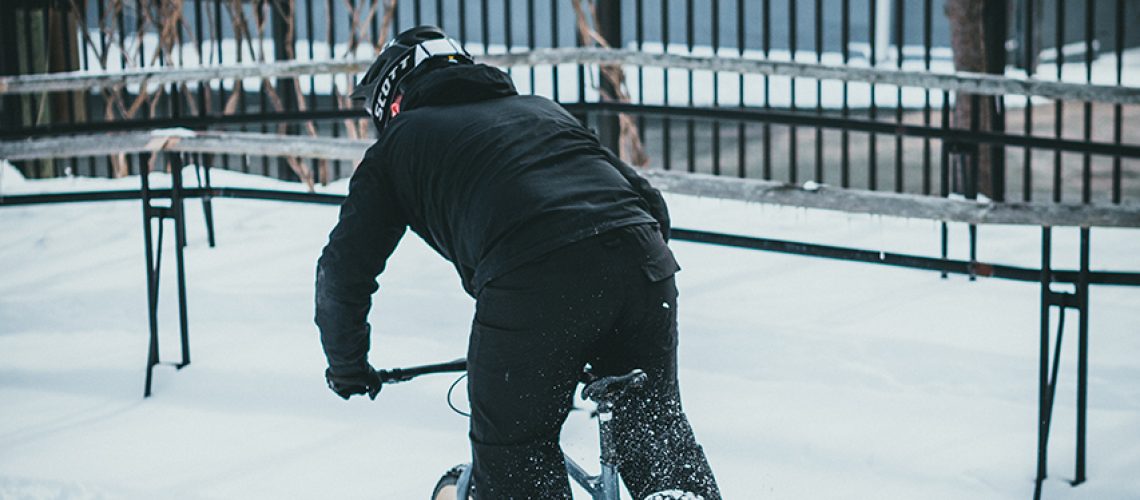Winter cycling in St. George can be an exciting and refreshing experience, but before you hit the snow-covered trails, it’s crucial to get your bike ready for winter. Proper maintenance ensures your bike handles cold, wet weather conditions while extending the lifespan of its components. In this guide, we’ll walk through the essential steps to prepare your bike for winter riding, from tire pressure adjustments to chain lubrication, ensuring you’re ready to ride all season long.
Check Your Tires: Adjust Pressure and Consider Winter Tyres
One of the first things to focus on when preparing your bike for winter is your tires. Winter conditions can make the trails and roads slippery due to snow, ice, and wet weather. Reducing your tire pressure will increase traction, making it easier to ride on slippery surfaces. For road bikes, keep the pressure slightly lower than you would during the summer months to maintain grip.
If you frequently ride in snow or wet weather, you might want to consider investing in winter tyres. These tires are designed to handle wet roads, mud, and snow, providing extra grip and control. For e-bike riders, winter tires will also help manage the additional weight of the e-bike battery, ensuring safer rides in harsh conditions.
Give Your Brakes Extra Attention
Whether you have disc brakes or rim brakes, proper brake maintenance is critical for winter riding. Wet weather can reduce stopping power, making it more challenging to control your bike, especially on snow-covered trails. For those using rim brakes, keep in mind that road spray from water and salt can wear down the rims more quickly. It’s essential to inspect your brake pads for wear and replace them if needed.
For disc brake users, winter conditions can lead to mud and dirt buildup around the rotors, reducing effectiveness. Regularly cleaning your bike’s drivetrain, including the brake rotors and pads, will improve performance. Checking the condition of your brakes before each ride ensures reliable stopping power even when conditions are less than ideal.
Apply Lubricant to the Chain and Drivetrain
Winter riding exposes your bike to wet and muddy conditions, which can wreak havoc on your chain and bike’s drivetrain. To keep your bike running smoothly, clean the chain thoroughly and apply a high-quality chain lubricant that is designed for wet weather. A lubricant with rust-preventing properties is ideal, as winter moisture can lead to corrosion over time.
Don’t forget to inspect other moving parts of your bike, such as the jockey wheels and bottom bracket. Ensuring these components are well-lubricated will not only improve your pedaling efficiency but also protect the parts from premature wear due to winter conditions.
Install Fenders to Protect Yourself and Your Bike
One of the most overlooked winter cycling tips is installing fenders on your bike. Fenders are crucial for protecting both you and your bike from road spray, mud, and salt. Without them, wet conditions can quickly cover your bike and clothes in dirt, leading to extra wear on the frame and components.
Installing front and rear fenders will shield your bike from the damaging effects of road salt, which can lead to corrosion. Fenders also help prevent dirt and mud from getting into your suspension systems, ensuring they remain functional throughout the winter months. It’s a small investment that pays off in the long run by preserving your bike’s performance and keeping you cleaner during your rides.

Regular Bike Cleaning: A Must in Wet Weather
Keeping your bike clean is more important in winter than any other time of year. After each ride, it’s a good habit to give your bike a thorough rinse to remove any accumulated dirt, salt, or grime. If left unattended, these substances can eat away at your bike frame, components, and suspension systems.
Pay special attention to your wheels, drivetrain, and brakes when washing your bike. Use a soft brush to clean your rims, jockey wheels, and other small bike parts that might collect dirt during your ride. Don’t forget to dry your bike thoroughly afterward, and if possible, store your bike indoors to prevent rust from forming.
Protect Your E-Bike Battery
Winter riding requires extra attention if you’re riding an e-bike. Cold temperatures can impact your e-bike battery’s performance, reducing its range and efficiency. To protect the battery, avoid storing your bike outdoors in freezing conditions. Instead, remove the battery and store it indoors when the bike is not in use.
During winter rides, be mindful of the battery’s charge level, as it will drain faster in cold conditions. If you plan long rides in cold weather, consider carrying a spare battery or planning routes with charging options.
Lights and Reflective Gear: Stay Visible in Dark Conditions
As the days grow shorter, winter riding often means riding in low-light conditions. Investing in a good set of bike lights is essential for both visibility and safety. A powerful front light will help illuminate the path ahead, while a flashing rear light will make you more visible to cars and other cyclists. Ensure your lights are fully charged before each ride, and carry spare batteries if possible.
Adding reflective elements to your bike and clothing is another great way to improve visibility during night rides. Reflective strips on your clothing, backpack, and bike will catch the headlights of cars, making you easier to spot in the dark.
Keep an Eye on Your Bike’s Suspension and Moving Parts
Winter riding can be tough on your bike’s suspension systems. The cold can stiffen suspension components, and mud and snow can block the moving parts from functioning properly. Before each ride, check the suspension for any signs of wear or reduced performance. Clean the suspension thoroughly after each ride to remove mud, salt, and snow, and apply a small amount of lubricant to keep things moving smoothly.
Additionally, inspect your bike’s drivetrain, including the chain, bottom bracket, and derailleur, for any dirt or debris that might interfere with smooth pedaling. Regular maintenance will prevent these parts from wearing out prematurely in winter conditions.
Clothing and Gear for Winter Cycling
Equally important to bike preparation is ensuring you’re properly dressed for winter cycling. Winter riding requires warm, moisture-wicking clothing to keep you comfortable in cold and wet conditions. Layering is key to staying warm, but make sure to wear breathable layers that won’t trap sweat.
Essential winter gear includes a windproof jacket, insulated gloves, and waterproof shoe covers to protect your feet from road spray and slush. A cycling cap under your helmet will keep your head warm, while reflective elements on your clothing will ensure visibility in low-light conditions.
If you encounter too much snow on the roads or trails, it’s always a good idea to have alternative plans like riding indoors. Indoor trainers can help you stay fit through the winter months without risking safety on icy roads.
Get Ready for Winter Riding
Winter cycling in St. George offers a new level of adventure, but it requires careful preparation. By taking the time to prepare your bike and apply lubricant to the bike’s drivetrain, adjust the tire pressure, and maintain your brakes, you can enjoy a safe and enjoyable ride. Whether you’re hitting the snow-covered trails or braving the roads in wet weather, keeping your bike in top shape will ensure you’re ready for any conditions winter throws your way.
Don’t hesitate to visit your local bike shops, such as Bicycles Unlimited, to get expert advice on winter bike maintenance and ensure your ride is in perfect condition for the season ahead.


